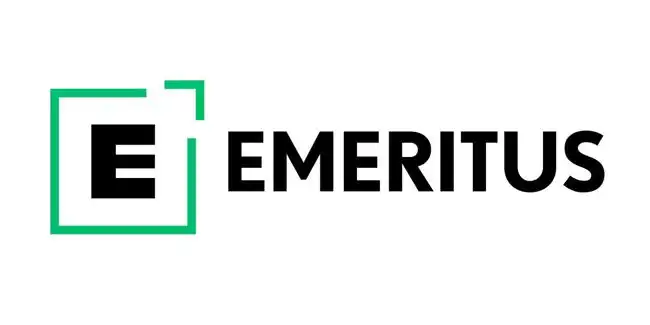With the best eLearning trackers and training tracking software, you can easily monitor and measure the success of your learners. You can track their skills, progress, and goals to ensure they are meeting objectives and mastering the material in your online courses.
While working as an eLearning professional, I had to quickly find a method to track my students’ participation and effectiveness in my virtual learning classroom.
After conducting lots of research and determining which ways I felt worked best, I have decided to help others by providing my learned knowledge of eLearning trackers for online courses.
Throughout this article, I will go over what an eLearning tracker is, explain how to use this unique and useful tool, describe the various tracking techniques in eLearning, teach you how to track your LMS’ effectiveness, and suggest a few must-have features for your training tracking software.
My goal is to encourage other eLearning educators to select an eLearning tracker that works best for them as well as explain how it works in hopes that we can find ways to improve courses and students’ learning processes.
What is an eLearning Tracker?
An eLearning tracker gives you the opportunity to manage your eLearning course in a better, more responsible way.
By using an eLearning tracker, you will gain the ability to look at your students’ behavior when it comes to your online course. For example, you will be able to see your students’ activity, how long they were logged into your course, how many times they visited, and more.
This tool ensures that both the eLearning educator and the students receive the best experience out of their virtual classroom learning experience.
With an eLearning tracker, your students must become more engaged in your coursework as well as log in multiple times a day or week. This throws out any dishonesty from the student about their attendance and ensures that they are getting the most out of their studies.
Tracking Techniques in eLearning
There are seven common types of eLearning tracking techniques being used today for employee training as well as student teachings. Below, I will briefly discuss these seven different types of eLearning tracking techniques.
1. Automatic Tracking
This is when an eLearning professional uses a tool that automatically collects data on the courses or training.
Some of the basics that automatic tracking shows the host is how many times the course was viewed and the amount of time the student spent on the course. This helps with understanding how the students used the course and may ultimately lead to future planning on what to change about the course.
2. Manual Tracking
This is beneficial to eLearning professionals if they only need to know minimal data about their courses or if there are no eLearning trackers available.
A common way to set up a manual tracker is to include a form at the end of your course for the student to print, fill out, and send back to the eLearning educator.
Another common way is to include a sign-in sheet that must be returned to the host. This involves filling out paperwork stating that they have signed into the course and completed their objectives for the day. As you can see, these are easy methods of tracking with no need for special software, but it is a tedious approach that might have loopholes for the student to slide through.
3. LMS Tracking
Learning Management System (LMS) is one of the best eLearning tracking tools. It was created specifically for tracking, reporting, and delivering virtual courses or employee training programs. Through the LMS tracking tool, you can see the students’ scores, sections they have completed, deadlines being met, and so much more.

4. Custom Tracking
If you consider yourself to be tech-savvy, you may be able to custom-build your own tracking system.
The goal is to establish a method that can store the needed information into a database. This seems complex and time-consuming to me, but you may be able to do it. You can choose to do something as simple as an online completion form or creating your own customized LMS tracking.
5. Clicking Method
This is an excellent method to micromanage your students’ involvement in your online course. It can show you how many times they clicked on pages in your course. You will then receive a report that will provide insight on how many pages clicks certain sections may have received as well as their peak visiting times and how long they were visited.
However, it is important to keep in mind that this technique only shows you page views and clicks. Therefore, if your course is a video presentation or flash file, the clicking method will not work for you.
6. Web Server
The web server method provides a lot of information to eLearning educators. This tool shows how many times the students visited the virtual course, which pages they clicked on, and how much time they spent browsing the information.
You can also see when the peak viewing times were which may be able to help you organize certain learning activities in the future around these time periods.
7. Database Technique
This type of eLearning tracking technique requires students or employees to enter their basic information such as their name and starting time of the course. The webpage will record this information and send it to the eLearning educator so that they can form a report that explains the details of the students’ course completion data and their activity while browsing the course.
After reading about all seven of these options, my advice is to choose the type of eLearning tracking that fits you and your needs as a professional. You may need something very simple, or you may need something very detailed. All that matters is that you are getting what you need out of your tracking tool for your course.
In this article, you can read about the top 10 Tin Can API LMS that will help you in your eLearning teaching experience.
How to Track Your LMS Effectiveness
It is important that you make sure your LMS is working, and there are a few ways to successfully do this. The following are the five most effective ways to ensure that your LMS is working:
1. Collect Feedback
One of my most recommend ways of determining if your LMS is working is to simply ask your students for feedback. Some of the ways to do this are to create polls, ask your students to complete a survey, or conduct short interviews.
When collecting feedback, make sure that you are asking a variety of different students because your goal should be to help many individuals instead of a small amount.
2. A Refresher Course
Every so often, students or employees will need to participate in a refresher course to help them remember things that they have previously learned. By offering a refresher course, you are ensuring that your students understand the knowledge that they need to know as well as remain fully aware and compliant in a specific field.
3. Test the Students’ Knowledge
Throughout the duration of your course, students will continuously take in new and important information. To ensure that they are progressing through the course, attaching quizzes is a terrific way to help students take in the appropriate information needed to pass your course.
4. Track the Students’ Development
LMS should show the activity and progression of your students. By tracking this important development, you can determine if your courses and training are working for people. You can do this by looking at your students’ overall scores, their success rates, and the time spent on your course.
I suggest that you look at how many students have dropped your course. If you see a high number of students dropping your course, the reason typically is that your course simply is not engaging enough. To fix this, you should make sure that your courses benefit all learners and their needs.
5. Track the Course Attempts
Some individuals will have no issues when completing your course, but others might need additional help. As an eLearning educator, you should be able to tell who is having trouble progressing through your course by the number of attempts on the pages. Some individuals simply need to look back at certain pages multiple times to retain the information.
If you are monitoring your course and notice that someone has a lot of course attempts, I would recommend reaching out to that individual to see if they need some help. Sometimes, your course may need to be shortened or altered if you see the number of attempts increasing among many students in your course.
Must-Have Features for a Training Tracking Software
There are several must-have features that you should consider getting to go along with your training tracking software.
Below, I will discuss a few of these must-have features.
- An effective reporting system with data extraction.
- Easy integrations with learning management systems.
- Some type of course scheduling features.
- Cloud-based with fast online access.
- Personalized learning tracks.
Being one of the most common problems in online learning, it is extremely important to be on the lookout for and prevent any possible cheating. Read more about this here.
Useful Resources
- LMS Vs. eLearning platform: the key differences
- How to track eLearning without an LMS
- How to create an online course
Conclusion
I hope that this article helped you learn what an eLearning tracker is, how to use one, the several types of tracking techniques, and the must-have features that you should look for.
Understanding eLearning trackers will help you become a better educator as well as help your students learn and retain information more effectively. These tools help by providing useful information to the eLearning educator so that they can make updates and changes to their courses to benefit their future students in a better way.
If you want to become an even more effective eLearning professional in all facets, you should check out the Professional Certificate in Instructional Design program from Emeritus. This transformative program equips participants with the knowledge and skills they need to excel in this field.
Unlike other programs, this one-of-a-kind course provides hands-on experience with the latest tools and methodologies used in instructional design. Participants will learn how to design high-quality, impactful solutions that help people learn better and achieve their goals.
By the end of the program, graduates will be well-equipped to create compelling learning experiences that engage and inspire learners of all ages and backgrounds.
Whether you’re a seasoned professional looking to take your skills to the next level or a newcomer interested in launching a career in this exciting field, the Professional Certificate in Instructional Design is the program for you.
You can learn more about the program and request a brochure at this link.
 Emeritus Professional Instructional Design Certificate | Online Certificate Course
Emeritus Professional Instructional Design Certificate | Online Certificate Course
Gain firsthand expertise in instructional design principles and methodologies through this unique Professional Certificate program. Create impactful learning solutions and improve people's ability to learn.









